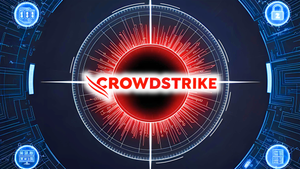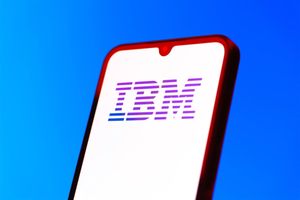
The global artificial intelligence landscape is undergoing a profound transformation, driven by an insatiable demand for computational power. At the forefront of this shift is the emergence of "neoclouds"—a new breed of cloud providers purpose-built and hyper-optimized for AI workloads. These specialized infrastructure companies are attracting unprecedented investment, with billions of dollars flowing into firms like CoreWeave and Crusoe, signaling a significant pivot in how AI development and deployment will be powered. This strategic influx of capital underscores the industry's recognition that general-purpose cloud solutions are increasingly insufficient for the extreme demands of cutting-edge AI.
This surge in funding, much of which has materialized in the past year and continues into 2025, is not merely about expanding server farms; it's about building an entirely new foundation tailored for the AI era. Neoclouds promise faster, more efficient, and often more cost-effective access to the specialized hardware—primarily high-performance GPUs—that forms the bedrock of modern AI. As AI models grow exponentially in complexity and scale, the race to secure and deploy this specialized infrastructure has become a critical determinant of success for tech giants and innovative startups alike.
The Technical Edge: Purpose-Built for AI's Insatiable Appetite
Neoclouds distinguish themselves fundamentally from traditional hyperscale cloud providers by offering an AI-first, GPU-centric architecture. While giants like Amazon Web Services (AWS), Microsoft Azure (NASDAQ: MSFT), and Google Cloud (NASDAQ: GOOGL) provide a vast array of general-purpose services, neoclouds like CoreWeave and Crusoe focus singularly on delivering raw, scalable computing power essential for AI model training, inference, robotics, simulation, and autonomous systems. This specialization translates into significant technical advantages.
CoreWeave, for instance, operates a cloud platform meticulously engineered for AI, providing customers with bare-metal access to clusters of NVIDIA (NASDAQ: NVDA) H100, A100, and even early shipments of next-generation Blackwell GPUs. Their infrastructure incorporates high-speed networking solutions like NVLink-4 and InfiniBand fabrics, optimized for rapid data movement and reduced I/O bottlenecks—critical for large-scale deep learning. CoreWeave’s financial prowess is evident in its recent funding rounds, including a massive $7.5 billion conventional debt round and a $1.1 billion equity round in May 2024, followed by another $650 million debt round in October 2024, and a $642 million minority investment in December 2023. These rounds, totaling over $2.37 billion as of October 2024, underscore investor confidence in its GPU-as-a-Service model, with 96% of its 2024 revenue projected from multi-year committed contracts.
Crusoe Energy offers a unique "energy-first" approach, vertically integrating AI infrastructure by transforming otherwise wasted energy resources into high-performance computing power. Their patented Digital Flare Mitigation (DFM) systems capture stranded natural gas from oil and gas sites, converting it into electricity for on-site data centers. Crusoe Cloud provides low-carbon GPU compute, managing the entire stack from energy generation (including solar, wind, hydro, geothermal, and gas) to construction, cooling, GPUs, and cloud orchestration. Crusoe's significant funding includes approximately $1.38 to $1.4 billion in a round led by Mubadala Capital and Valor Equity Partners in October 2025 (a future event from our current date of 10/24/2025), with participation from NVIDIA, Founders Fund, Fidelity, and Salesforce Ventures, bringing its total equity funding since 2018 to about $3.9 billion. This follows a $750 million credit facility from Brookfield Asset Management in June 2025 and a $600 million Series D round in December 2024 led by Founders Fund, valuing the company at $2.8 billion. This innovative, sustainable model differentiates Crusoe by addressing both compute demand and environmental concerns simultaneously.
The initial reactions from the AI research community and industry experts have been overwhelmingly positive. The ability to access cutting-edge GPUs without the long procurement times or complex configurations often associated with traditional clouds is seen as a game-changer. Neoclouds promise faster deployment agility, with the capacity to bring high-density GPU infrastructure online in months rather than years, directly accelerating AI development cycles and reducing time-to-market for new AI applications.
Competitive Implications and Market Disruption
The rise of neoclouds has profound implications for the competitive landscape of the AI industry. While traditional tech giants like Google (NASDAQ: GOOGL), Amazon (NASDAQ: AMZN), and Microsoft (NASDAQ: MSFT) continue to invest heavily in their own AI infrastructure, the specialized focus and agility of neoclouds present a formidable challenge and an alternative for AI companies. Startups and even established AI labs can now bypass the complex and often expensive general-purpose cloud ecosystems to gain direct access to optimized GPU compute.
Companies heavily reliant on large-scale AI model training, such as those developing foundation models, autonomous driving systems, or advanced scientific simulations, stand to benefit immensely. Neoclouds offer predictable, transparent pricing—often a simple per-GPU hourly rate inclusive of networking and storage—which contrasts sharply with the often opaque and complex metered billing of hyperscalers. This clarity in pricing and dedicated support for AI workloads can significantly reduce operational overheads and allow AI developers to focus more on innovation rather than infrastructure management.
This development could disrupt existing product offerings from traditional cloud providers, especially their high-end GPU instances. While hyperscalers will likely continue to cater to a broad range of enterprise IT needs, their market share in specialized AI compute might face erosion as more AI-native companies opt for specialized providers. The strategic advantages gained by neoclouds include faster access to new GPU generations, customized network topologies for AI, and a more tailored support experience. This forces tech giants to either double down on their own AI-optimized offerings or consider partnerships with these emerging neocloud players.
The market positioning of companies like CoreWeave and Crusoe is strong, as they are viewed as essential enablers for the next wave of AI innovation. Their ability to rapidly scale high-performance GPU capacity positions them as critical partners for any organization pushing the boundaries of AI. The significant investments from major financial institutions and strategic partners like NVIDIA further solidify their role as foundational elements of the future AI economy.
Wider Significance in the AI Landscape
The emergence of neoclouds signifies a maturation of the AI industry, moving beyond general-purpose computing to highly specialized infrastructure. This trend mirrors historical shifts in other computing domains, where specialized hardware and services eventually emerged to meet unique demands. It highlights the increasingly critical role of hardware in AI advancements, alongside algorithmic breakthroughs. The sheer scale of investment in these platforms—billions of dollars in funding within a short span—underscores the market's belief that AI's future is inextricably linked to optimized, dedicated compute.
The impact extends beyond mere performance. Crusoe's focus on sustainable AI infrastructure, leveraging waste energy for compute, addresses growing concerns about the environmental footprint of large-scale AI. As AI models consume vast amounts of energy, solutions that offer both performance and environmental responsibility will become increasingly valuable. This approach sets a new benchmark for how AI infrastructure can be developed, potentially influencing future regulatory frameworks and corporate sustainability initiatives.
Comparisons to previous AI milestones reveal a consistent pattern: advancements in AI are often bottlenecked by available compute. From the early days of deep learning requiring specialized GPUs to the current era of large language models and multimodal AI, access to powerful, scalable hardware has been a limiting factor. Neoclouds are effectively breaking this bottleneck, enabling researchers and developers to experiment with larger models, more complex architectures, and more extensive datasets than ever before. This infrastructure push is as significant as the development of new AI algorithms or the creation of vast training datasets.
Potential concerns, however, include the risk of vendor lock-in within these specialized ecosystems and the potential for a new form of "compute inequality," where access to the most powerful neocloud resources becomes a competitive differentiator only accessible to well-funded entities. The industry will need to ensure that these specialized resources remain accessible and that innovation is not stifled by an exclusive compute landscape.
The Road Ahead: Future Developments and Expert Predictions
Looking ahead, the neocloud sector is poised for rapid expansion and innovation. Experts predict a continued arms race for the latest and most powerful GPUs, with neocloud providers acting as the primary aggregators and deployers of these cutting-edge chips. We can expect closer collaborations between GPU manufacturers like NVIDIA and neocloud providers, potentially leading to co-designed hardware and software stacks optimized for specific AI workloads.
Near-term developments will likely include further specialization within the neocloud space. Some providers might focus exclusively on inference, others on specific model architectures (e.g., generative AI), or even niche applications like drug discovery or materials science. We could also see the emergence of hybrid models, where neoclouds seamlessly integrate with traditional hyperscalers for certain aspects of AI workflows, offering the best of both worlds. The integration of advanced cooling technologies, such as liquid cooling, will become standard to manage the heat generated by increasingly dense GPU clusters.
Potential applications on the horizon are vast, ranging from enabling truly real-time, context-aware AI agents to powering complex scientific simulations that were previously intractable. The availability of abundant, high-performance compute will accelerate breakthroughs in areas like personalized medicine, climate modeling, and advanced robotics. As AI becomes more embedded in critical infrastructure, the reliability and security of neoclouds will also become paramount, driving innovation in these areas.
Challenges that need to be addressed include managing the environmental impact of scaling these massive data centers, ensuring a resilient and diverse supply chain for advanced AI hardware, and developing robust cybersecurity measures. Additionally, the talent pool for managing and optimizing these highly specialized AI infrastructures will need to grow significantly. Experts predict that the competitive landscape will intensify, potentially leading to consolidation as smaller players are acquired by larger neoclouds or traditional tech giants seeking to enhance their specialized AI offerings.
A New Era of AI Infrastructure
The rise of "neoclouds" and the massive funding pouring into companies like CoreWeave and Crusoe mark a pivotal moment in the history of artificial intelligence. It signifies a clear shift towards specialized, purpose-built infrastructure designed to meet the unique and escalating demands of modern AI. The billions in investment, particularly evident in funding rounds throughout 2023, 2024, and continuing into 2025, are not just capital injections; they are strategic bets on the foundational technology that will power the next generation of AI innovation.
This development is significant not only for its technical implications—providing unparalleled access to high-performance GPUs and optimized environments—but also for its potential to democratize advanced AI development. By offering transparent pricing and dedicated services, neoclouds empower a broader range of companies to leverage cutting-edge AI without the prohibitive costs or complexities often associated with general-purpose cloud platforms. Crusoe's unique emphasis on sustainable energy further adds a critical dimension, aligning AI growth with environmental responsibility.
In the coming weeks and months, the industry will be watching closely for further funding announcements, expansions of neocloud data centers, and new partnerships between these specialized providers and leading AI research labs or enterprise clients. The long-term impact of this infrastructure revolution is expected to accelerate AI's integration into every facet of society, making more powerful, efficient, and potentially sustainable AI solutions a reality. The neocloud is not just a trend; it's a fundamental re-architecture of the digital backbone of artificial intelligence.
This content is intended for informational purposes only and represents analysis of current AI developments.
TokenRing AI delivers enterprise-grade solutions for multi-agent AI workflow orchestration, AI-powered development tools, and seamless remote collaboration platforms.
For more information, visit https://www.tokenring.ai/.





